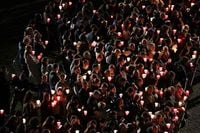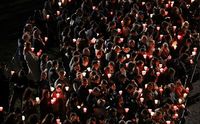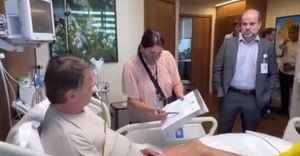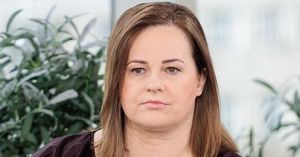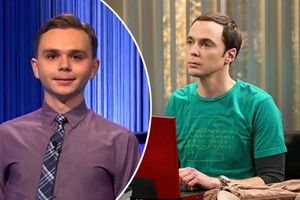Pope Francis, recovering from a double pneumonia, did not attend the annual procession held on Friday, April 18, 2025, at the Colosseum in Rome. This marks the third consecutive year the 88-year-old pontiff has missed this significant event, which draws thousands of Catholic faithful.
Under medical advice, the Pope is limiting his public appearances, and he was absent from the open-air ceremony on Good Friday, a day when Christians commemorate the crucifixion of Jesus. The Via Crucis at the Colosseum, a historic site believed to have served as a place of martyrdom for early Christians, reenacts the death of Jesus. Participants take turns carrying the cross of crucifixion while walking inside and around the ancient Roman arena, pausing to pray and listen to meditations.
Good Friday leads to Easter Sunday, the most important date on the Church's liturgical calendar, celebrating the resurrection of Jesus. Pope Francis, who has served as pontiff since 2013, faced a serious health crisis during his five-week hospitalization for double pneumonia. His absence from the Colosseum event is a continuation of his limited public engagements, as he also missed the ceremony in both 2023 and 2024.
The Holy See announced that the Pope had personally written the meditations for this year's ceremony, which is a rare occurrence in his papacy, having done so only once before in his 12 years as Pope. Each reflection began with a brief reading from the Bible and addressed pressing themes, including war, economic hardships, and the role of women in the Catholic Church.
As of now, the Vatican has not disclosed whether Pope Francis will participate in other Easter celebrations over the weekend. He also missed a previous ceremony at the Vatican on Thursday, April 17, 2025.
Among the attendees at the Colosseum event was U.S. Vice President JD Vance and his family, who are visiting Italy for the Easter holiday. Their presence highlights the significance of this annual tradition, even as the Pope's health remains a concern.
The absence of Pope Francis from such important events raises questions about the future of his public ministry and the impact of his health on the Catholic Church. The pontiff's health issues have been a topic of discussion among the faithful and church officials alike, as they navigate the challenges of leadership during such trying times.
As the Church prepares for Easter Sunday, many hope for the Pope's swift recovery and return to public life. The meditations he authored for the Good Friday ceremony reflect not only his personal insights but also the broader struggles faced by the global community, echoing the sentiments of many who look to the Church for guidance and hope.
In the meantime, the faithful continue to gather and participate in the traditions that have defined their faith for centuries. The Via Crucis serves as a powerful reminder of the sacrifice of Jesus and the resilience of the Christian community, even in the absence of their leader.
As the world watches, the Catholic Church navigates this pivotal moment, balancing the needs of its congregation with the realities of its leader's health. The Easter season, traditionally a time of renewal and hope, takes on additional significance as Pope Francis' recovery unfolds.
With the ongoing developments in the Pope's health and his limited public appearances, the faithful remain united in prayer, eager for his return to the forefront of the Church. The events of the past few years have underscored the importance of leadership and the need for compassion and understanding during times of uncertainty.
As Easter approaches, the messages of hope and resilience continue to resonate within the Church, reminding believers of the enduring power of faith, even in the face of adversity. The reflections penned by Pope Francis serve as a guiding light for many, encouraging a spirit of solidarity and support among the faithful.
